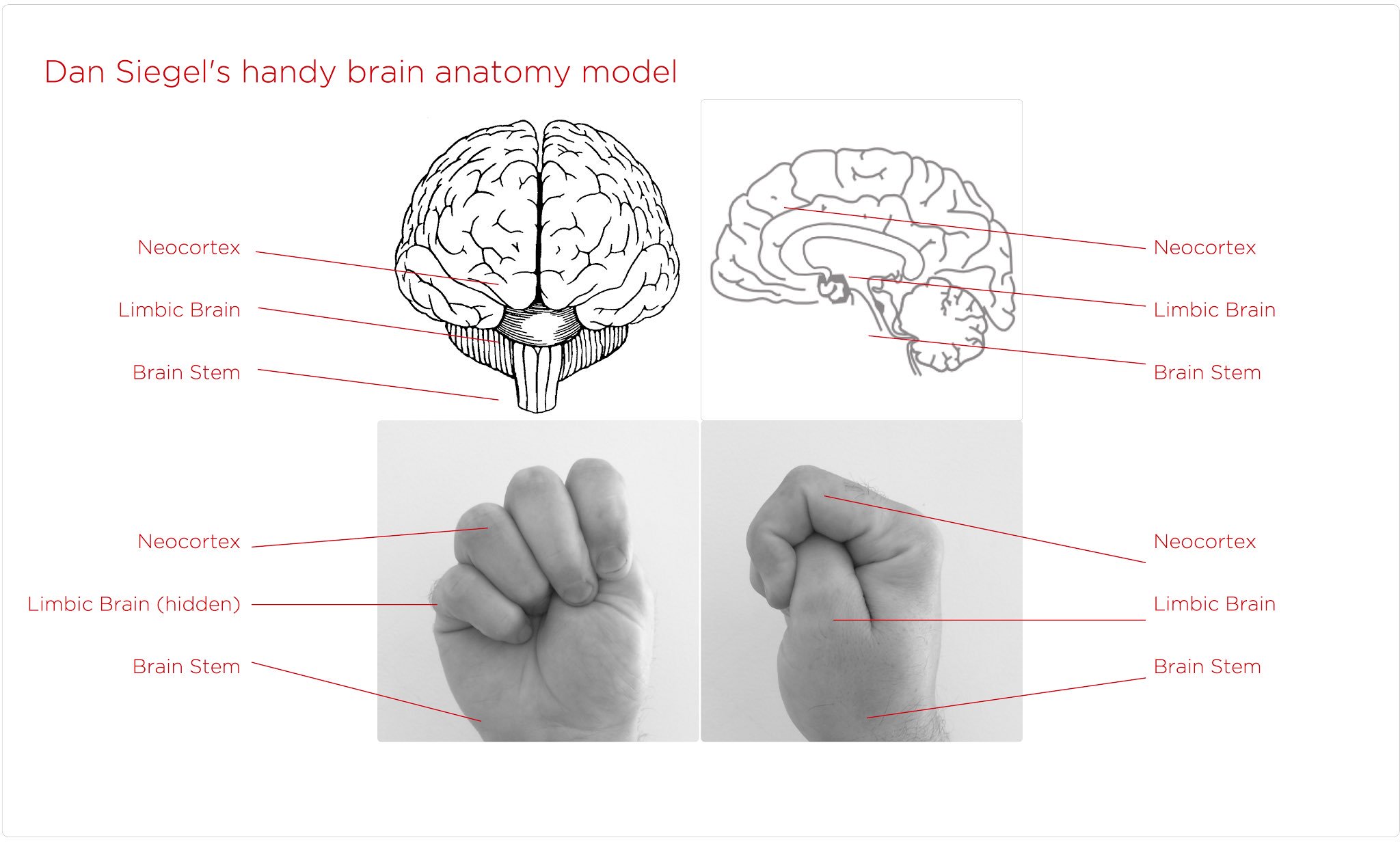Dr Dan Siegel has a neat way to help visualize when we’re not thinking with are best brain. The “Handy Model of the Brain describes how the brainstem (wrist) connects to the limbic system (palm and thumb) and is overlaid by the cortex (fingers wrapping over the thumb).

When your limbic system is on overdrive in fight/flight/faint mode the thinking cortex is connections are weakened and not able to regulate the limbic system, our lid is metaphorically flipped, the fingers open up. It’s a great signal to use, especially with kids, to show politely indicate if someone might not be well regulated at the moment.

Unfortunately, the brain isn’t that simplistically structured anatomically. Lisa Feldman Barrett discusses in “How Emotions are Made” that there are no scientific grounds for such a thing as the limbic system. Dang, I had really hoped to be able to give my kids a practical, neuroscience based, method of signaling about their feelings and communicating a need for help in regulation (or letting me I need help in regulating). In any case, I think this illustrates that: a) science progresses and we can get better models, b) we can teach kids anatomically based models for how they feel. As George Box Said “All models are wrong, some are useful”, and we can continue to be less wrong and more useful, and instill this same mindset into our kids.